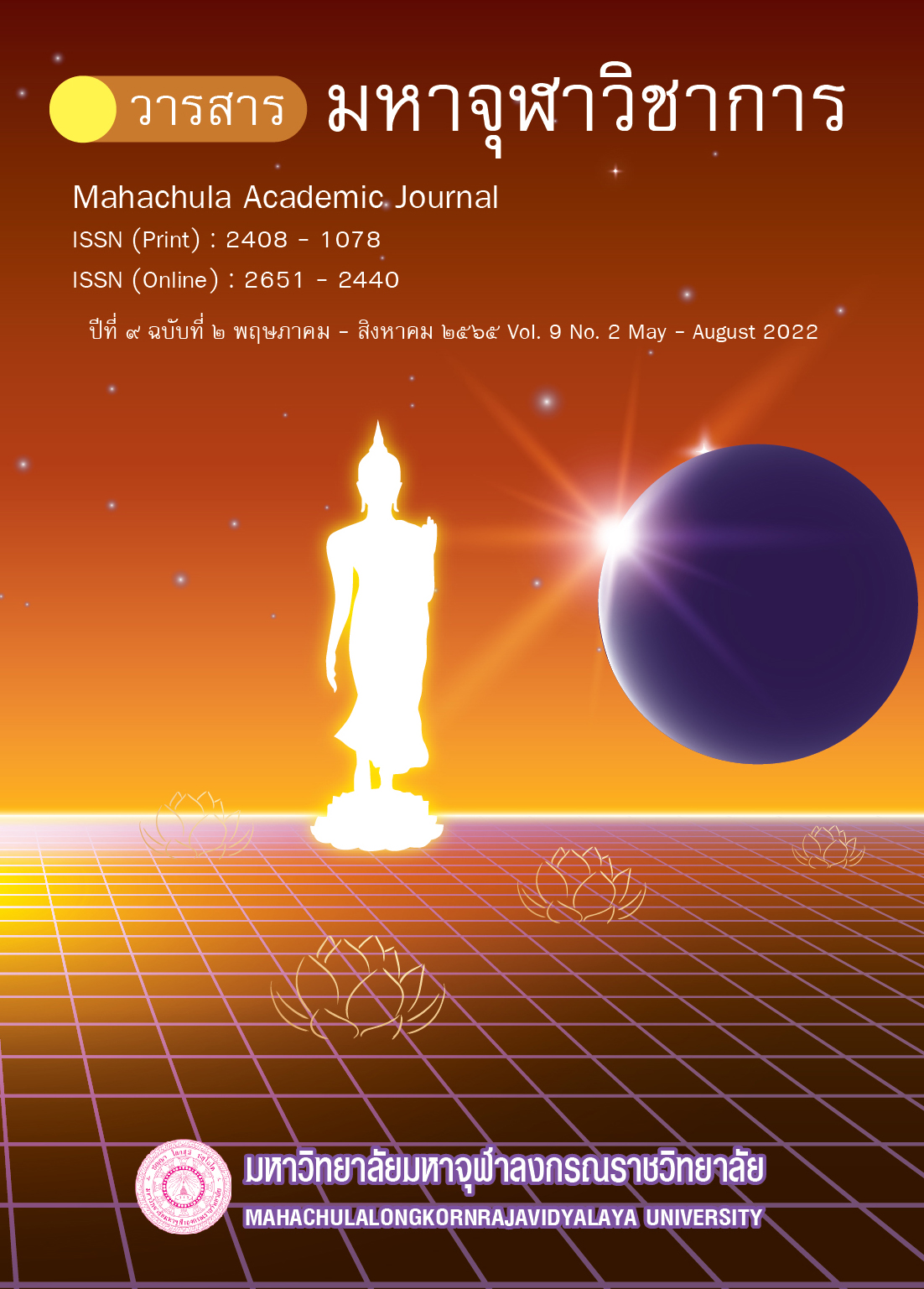The Guidelines for The Use of Vipassanā Meditation for The Therapy of Major Depression Disorder
Main Article Content
Abstract
The thesis entitled “The Guidelines for the Use of Vipassanā Meditation for the Therapy of Major Depressive Disorder” consisted of three objectives: 1) to study the factors and causes of major depressive disorder in medicine and Buddhism; 2) to study the guidelines for the therapy of major depressive disorder by Vipassanāmeditation; and 3) to study the results of major depressive disorder therapy by Vipassanā meditation. The study was a qualitative research with the data collection employed from documents and an in-depth interview.
From the study of factors and causes of major depressive disorder in medicine, it was found that there are caused by three factors which are: 1) Biological factors caused by the genetic disorders; 2) Psychological factors caused by the loss of beloved people or things; and 3) Sociological factors caused by the wrong way of confronting the problems. It was also found that factors.
From the study of the guidelines for major depressive disorder therapy by Vipassanā meditation, it was found that major depressive disorder can occur to both layperson and monks. The Buddha used the treatment method by reminding of mindfulness and teaching Vipassanā meditation, allowing the people in those days to be able to see the reality of suffering, with the eye of wisdom and able to abandon the defilements.
The results of major depressive disorder therapy by Vipassanā meditation found that patients with depression after having done the Vipassanā meditation have the following developments: 1) Emotional development: the patients are able to smile, laugh and become cheerful; 2) Thinking development: the patients are hopeful, rational, and interested more in the Dhamma. They do not give up or feel bored which normally would have led to committing suicide; 3) Behavior development: the patients have relationship and participate in activities. Including 4) Physical development: the patients are interested in hygiene care and have more understanding that mental health issues can have an effect on physical healt.
Article Details

This work is licensed under a Creative Commons Attribution-NonCommercial-NoDerivatives 4.0 International License.
References
ธนิต อยู่โพธิ์. วิปัสสนาภาวนา. พิมพ์ครั้งที่ ๒. กรุงเทพมหานคร: โรงพิมพ์มหาจุฬาลงกรณราชวิทยาลัย, ๒๕๔๗.
พระภาวนาพิศาลเมธี วิ. เอกสารประกอบการสอนรายวิชา สติปัฏฐานภาวนา. บัณฑิตวิทยาลัย: มหาวิทยาลัยมหาจุฬาลงกรณราชวิทยาลัย, ๒๕๕๕.
มหาจุฬาลงกรณราชวิทยาลัย. พระไตรปิฎกภาษาไทย ฉบับมหาจุฬาลงกรณราชวิทยาลัย. กรุงเทพมหานคร: โรงพิมพ์มหาจุฬาลงกรณราชวิทยาลัย, ๒๕๓๙.
อรพรรณ ลือบุญธวัชชัย. การพยาบาลสุขภาพจิตและจิตเวช. พิมพ์ครั้งที่ ๓. กรุงเทพมหานคร: สำนักพิมพ์แห่งจุฬาลงกรณ์มหาวิทยาลัย, ๒๕๕๔.
อัจฉราพร สี่หิรัญวงศ์ และคณะ. การพยาบาลจิตเวชศาสตร์. กรุงเทพมหานคร: สายธุรกิจโรงพิมพ์, ๒๕๕๗.
อุมาพร ตรังคสมบัติ. สร้างสมาธิให้ลูกคุณ. กรุงเทพมหานคร: ซันต้าการพิมพ์, ๒๕๕๓.
Mario Maj and Norman Sartorius, Depressive Disorders, Laserwords Private Limited, Chennai: India, 2002.


